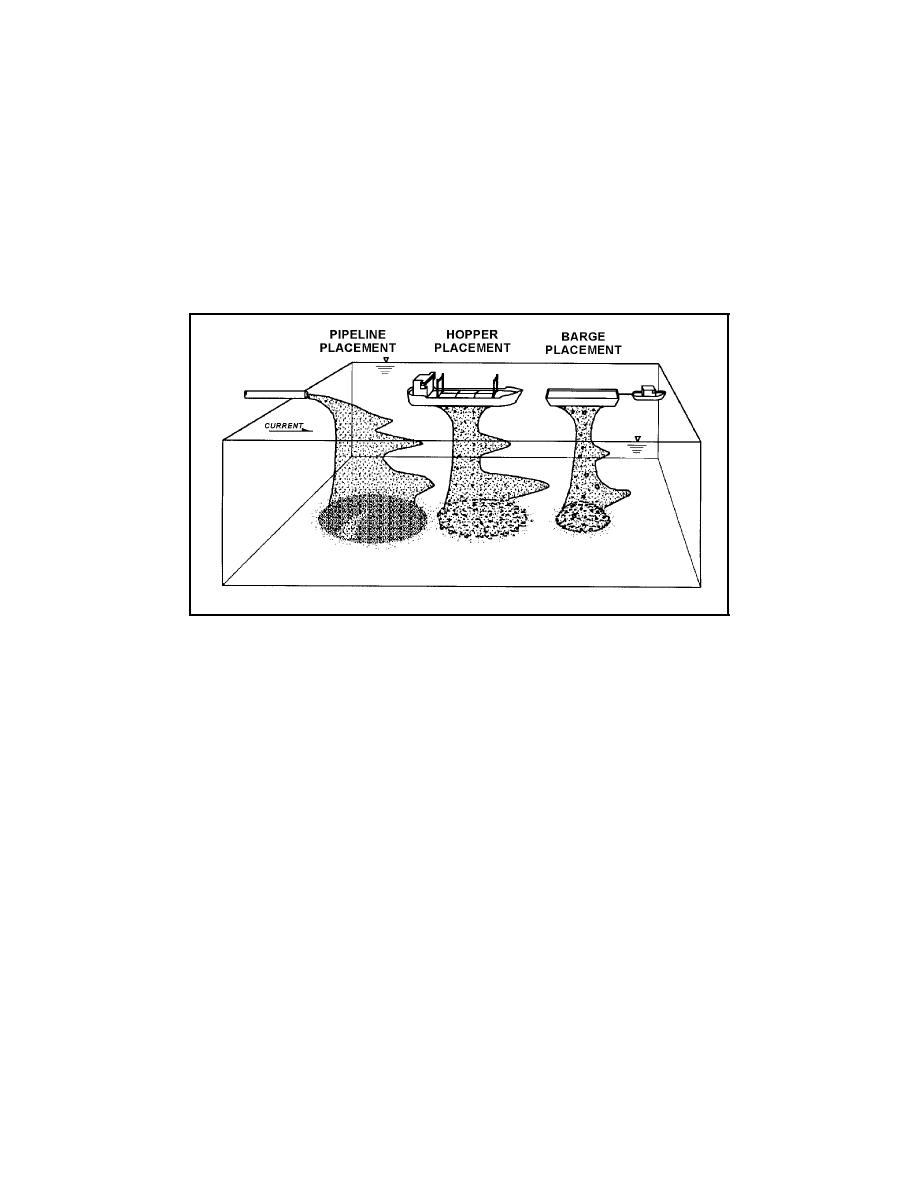 |
||
|
|
||
| |||||||||||||||
|
|
 dredged material released from barges and with material released from
hopper dredges (O'Connor and O'Connor 1983; Morton 1983a, 1987). In
fact, mechanically dredged cohesive sediments often remain in a clumped
condition, reflecting the shape of the dredge bucket. Mounds of such ma-
terial are stable, resist displacement during capping operations, and pre-
sent conditions ideal for subsequent LBC (Sanderson and McKnight
1986). However, these mounds may experience initial surface erosion due
tual illustration showing the use of conventional equipment for capping is
shown in Figure 3.
Figure 3. Conventional open-water placement for capping (after Palermo
1991c)
Spreading by barge movement
A layer of capping material can be spread or gradually built up using
bottom-dump barges if provisions are made for controlled opening or
movement of the barges. This can be accomplished by slowly opening a
conventional split-hull barge over a period of tens of minutes, depending
on the size of the barge and site conditions. Such techniques have been
successfully used for controlled placement of predominantly coarse-grained,
sandy capping materials (Sumeri 1989). The gradual opening of the split-
hull or multicompartmented barges allows the material to be released
slowly from the barge in a sprinkling manner. If tugs are used to slowly
move the barge during the release, the material can be spread in a thin
layer over a large area (Figure 4). Multiple barge loads are necessary to cap
larger areas in an overlapping manner. The gradual release of mechanically
dredged fine-grained silts and clays from barges may not be possible due
to potential "bridging" action; that is, the cohesion of such materials may
cause the entire barge load to "bridge" the split-hull opening until a criti-
cal point is reached at which time the entire barge load is released. If the
water content of fine-grained material is high, the material exits the barge
in a matter of seconds as a dense slurry, even though the barge is only par-
tially opened.
30
Chapter 5 Equipment and Placement Techniques
|
|
Privacy Statement - Press Release - Copyright Information. - Contact Us - Support Integrated Publishing |